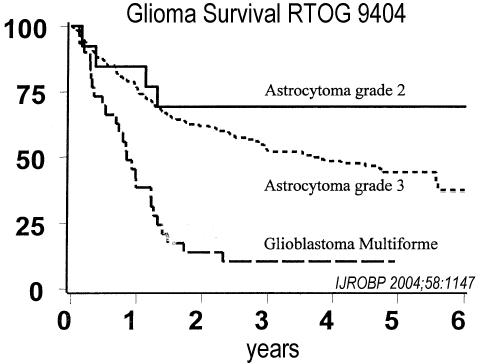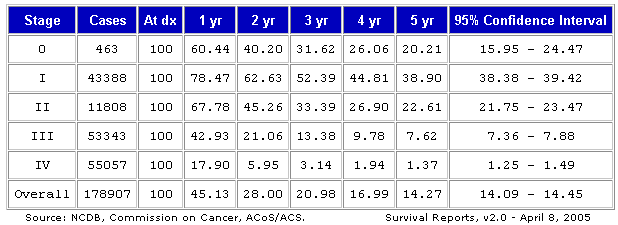 |
trying to make
accurate survival predictions |
|
Medical statistics (like all
statistics) can be confusing. Survival rates are often quoted using 5 year
survival numbers which report what percent of the patients with this cancer are
alive at 5 years (but does not mean, as some patients think, that you will only
live 5 years, nor does it mean that once you pass the 5 year mark, you are cured.)
Patients often want to know about survival odds when first diagnosed, but
survival is very dependant on how well the patient responds to treatment (go
here). Those patients whose cancer
responded well to therapy lives along time, those whose cancers did not
respond did poorly. It usually takes a few cycles of chemotherapy or weeks
of radiation to determine if the cancer is responding.
Survival statistics may be quoted as absolute (how
many people are really alive and kicking) versus relative or age adjusted survival
(what percent are alive compared to the number expected.) So for 80 year old men with
prostate cancer only 10% may die of the cancer over the next 5 years (90% relative
survival) but since many die of old age and other causes, only 50% are actually still
alive (50% absolute survival.) In fact of the 50% actually still alive, half of them may
still have prostate cancer but it is so slow growing it will never effect their survival.
So would you tell the 80 year old man his 'cure rate' is 90% or 50% or 25%?? |



